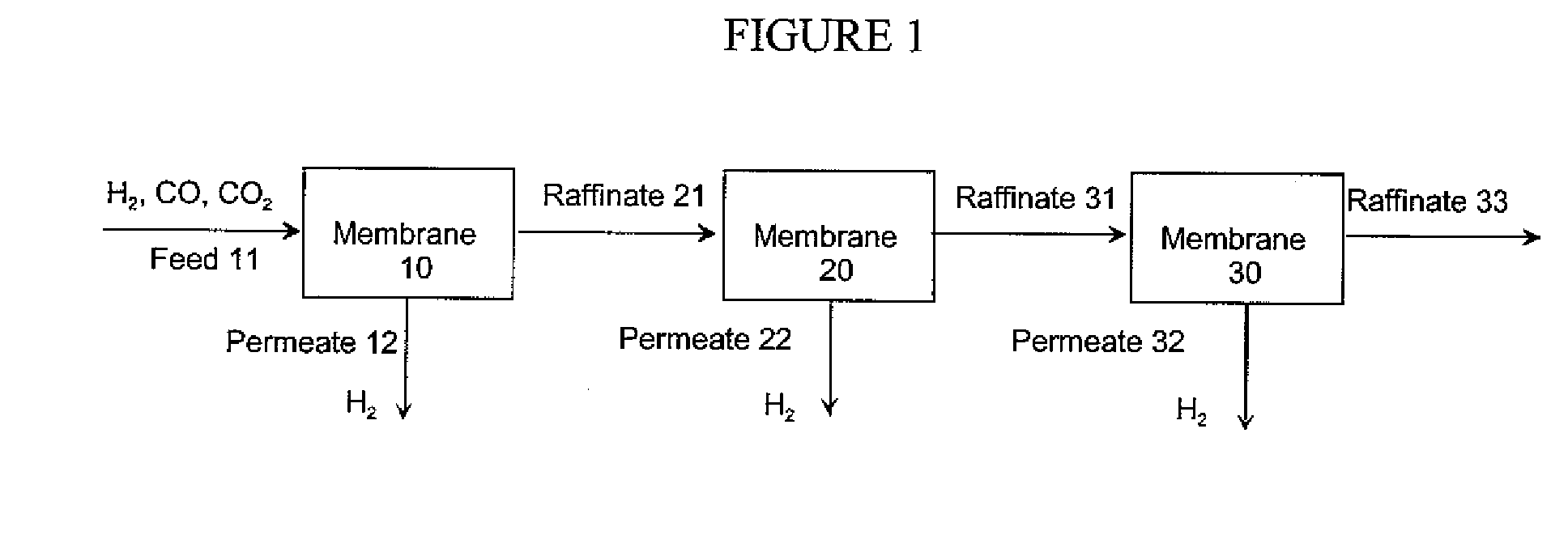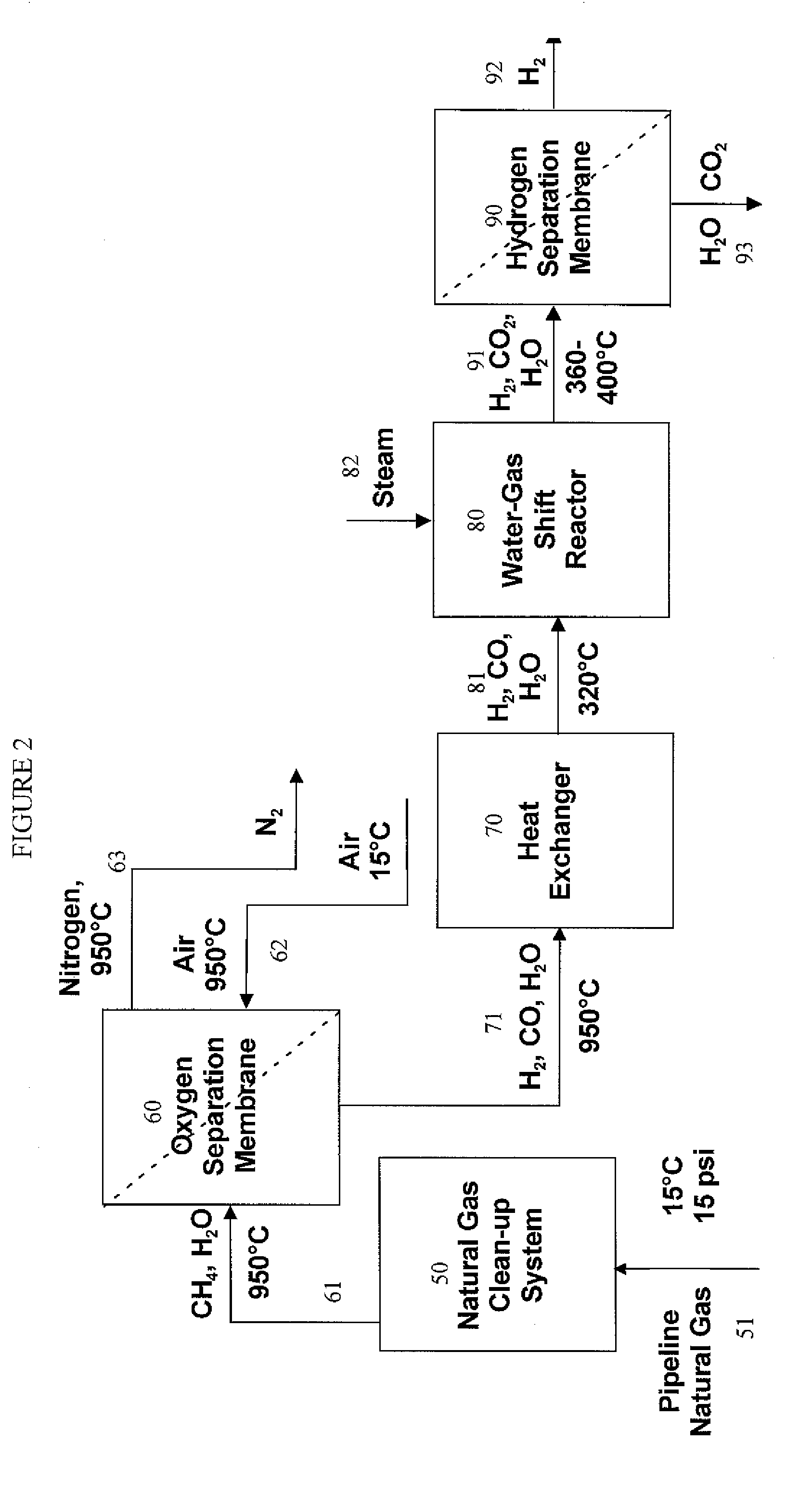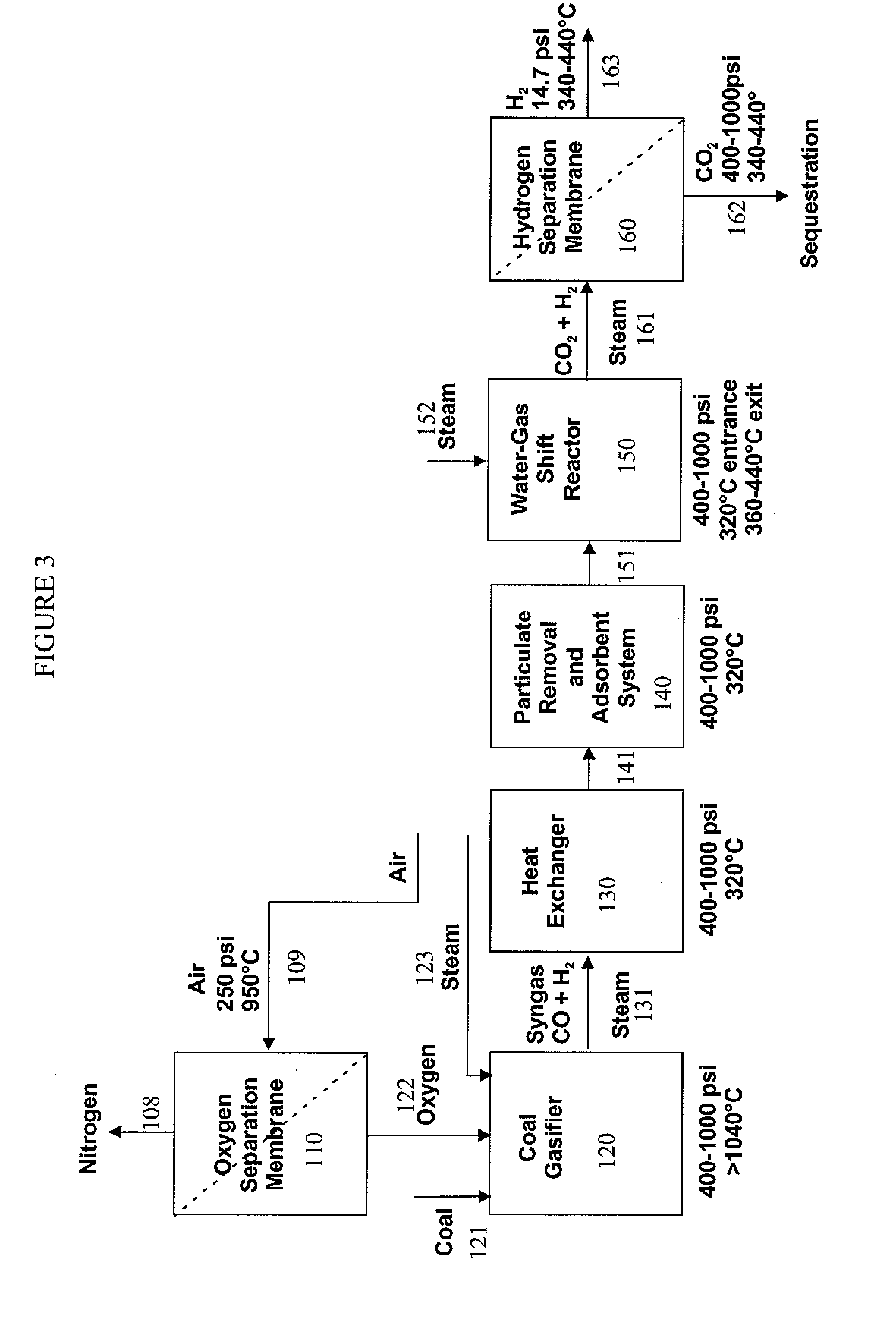Hydrogen separation process
a technology of hydrogen separation membrane and hydrogen, which is applied in the direction of inorganic chemistry, climate sustainability, synthetic resin layered products, etc., can solve the problems of limiting the system, operating at about 38° c, and loss of thermal efficiency
- Summary
- Abstract
- Description
- Claims
- Application Information
AI Technical Summary
Benefits of technology
Problems solved by technology
Method used
Image
Examples
example 1
Membrane Pretreatment
[0107] Prior to use in a hydrogen separation process, the membranes to be used are pretreated. Although applicant does not wish to be bound by theory, it is believed this pretreatment process minimizes the mechanical stress the membrane undergoes under actual operating conditions and improves the lifetime of the membrane and the performance of the membrane. Without this pretreatment procedure, the membrane will break at about 5 psig to 10 psig of outlet hydrogen pressure. The following description illustrates one specific example of the pretreatment procedure. Other specific useful process parameters, such as different reaction times, temperatures, membrane materials, pressures, and gases, are easily determined by one of ordinary skill in the art using the description provided herein without undue experimentation.
[0108] A vanadium membrane having a ⅞″ diameter was punched out from a sheet of V (about 130 microns thick, obtained from Aldrich) and cleaned with s...
example 2
Integrated WGS and HTM
[0115] Two lab-scale IWGSMR modules, respectively accommodating one and two hydrogen transport membranes, were designed, fabricated and assembled. The reactor modules were fabricated from stainless steel flanges of 2.75″ diameter. The membrane fitting into the 2.75″ flanges have a diameter of 1.89″. The copper gaskets used had an inner diameter of 1.45″ providing an active membrane surface area of 10.6 square centimeters (1.65 square inch) for each membrane. It was found that commercial Cr / Fe oxide-based water-gas shift catalyst (C12-4-02 from Süd-Chemie) was compatible with the hydrogen transport membranes constituted with surface Pd catalysts when the fresh commercial WGS catalyst was pre-treated in a hydrogen-stream (1:5 molar ratio) for one week to remove residual sulfate. The Cr / Fe oxide catalyst was packed in close proximity to the membrane surface without touching the membrane surface.
[0116] Optimized operating parameters, including composition and gas...
example 3
Long-Term Separation of H2 from WGS Gas with HTM
[0121] A composite HTM was tested at ambient pressure with a full mixture of water-gas shift gas containing 41.4% H2, 3.3% CO, 17.8% CO2, 37.3% steam and balance of inert gases in volume at 340° C. The feed side reactor compartment was packed with low-temperature water-gas shift catalyst (Cu / ZnO obtained from Süd Chemie) as the guard bed. FIG. 9 is a plot of hydrogen flux through a composite HTM as a function of time. As shown in FIG. 9, the membrane displayed an initial hydrogen flux of approximately 14 mL·min−1·cm−2 (STP), corresponding to an apparent hydrogen permeability of 1.4×10−7 mol·m−1·s−1·Pa−0.5. After four months (approximately 2,800 hrs) of continuous operation in the full water-gas shift mixture, the composite membrane maintained about 10 mL·min−1·cm2 (STP) of hydrogen flux and an apparent permeability of 1.0×10−7 mol·m−1·s−1·Pa−0.5, which is better than unalloyed palladium.
PUM
| Property | Measurement | Unit |
|---|---|---|
| Temperature | aaaaa | aaaaa |
| Temperature | aaaaa | aaaaa |
| Temperature | aaaaa | aaaaa |
Abstract
Description
Claims
Application Information
 Login to View More
Login to View More - R&D
- Intellectual Property
- Life Sciences
- Materials
- Tech Scout
- Unparalleled Data Quality
- Higher Quality Content
- 60% Fewer Hallucinations
Browse by: Latest US Patents, China's latest patents, Technical Efficacy Thesaurus, Application Domain, Technology Topic, Popular Technical Reports.
© 2025 PatSnap. All rights reserved.Legal|Privacy policy|Modern Slavery Act Transparency Statement|Sitemap|About US| Contact US: help@patsnap.com



